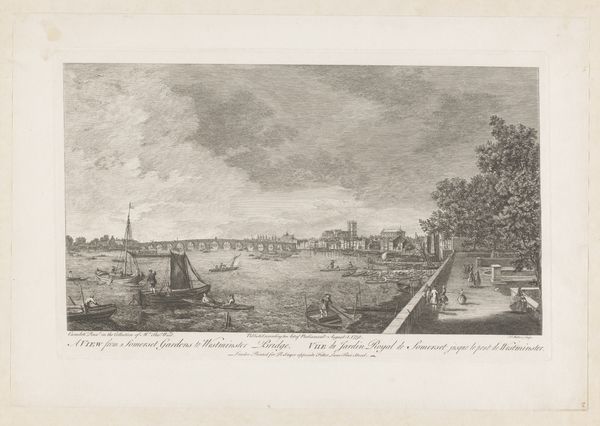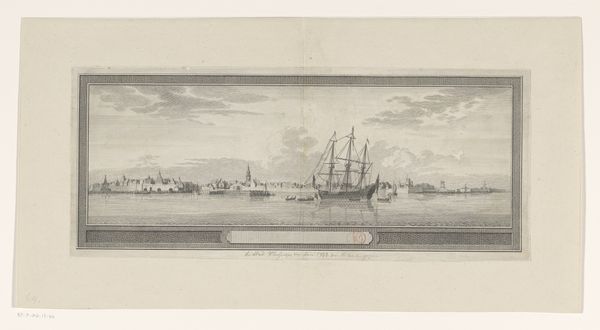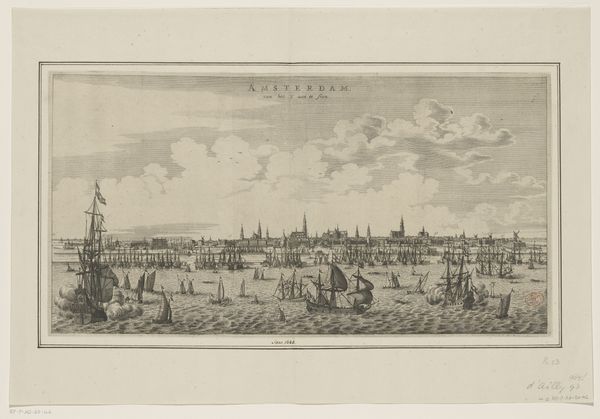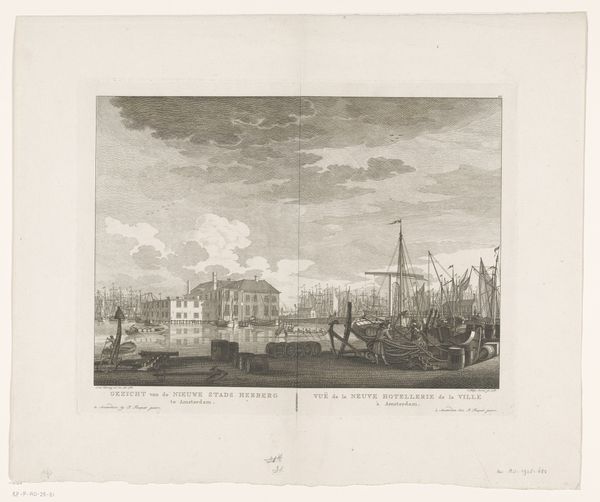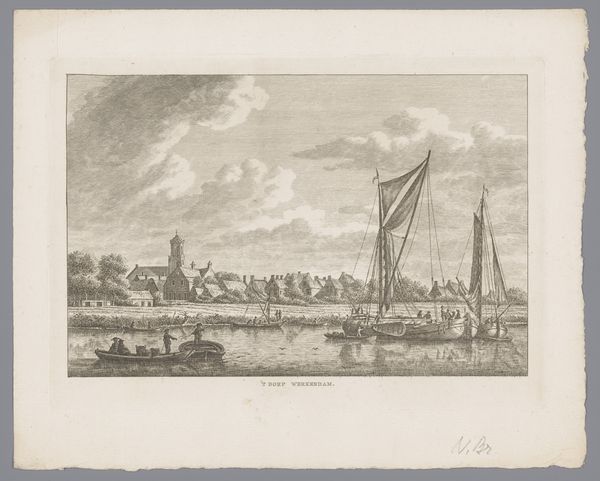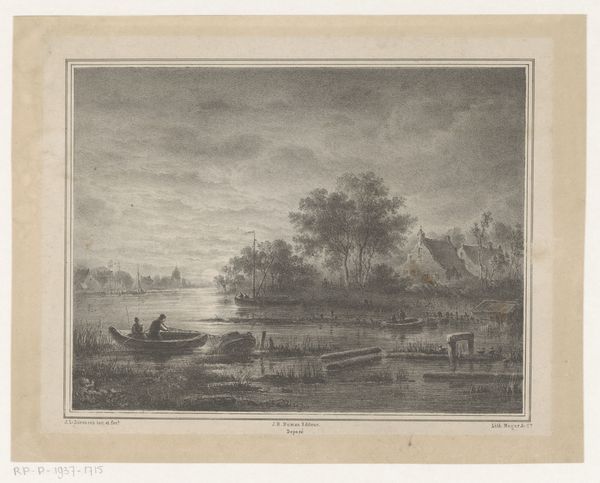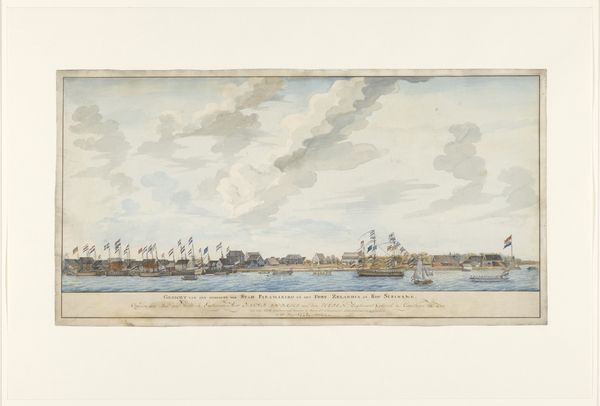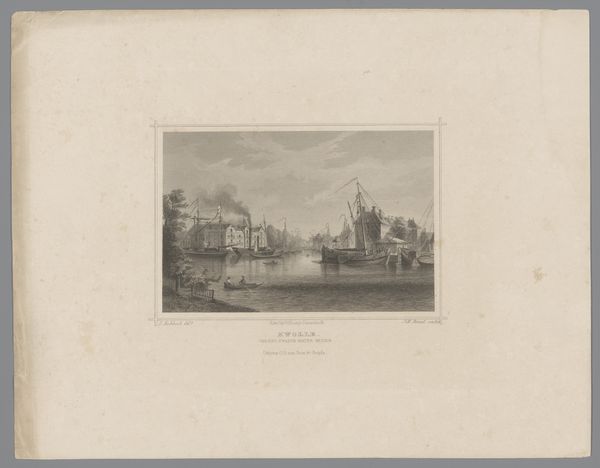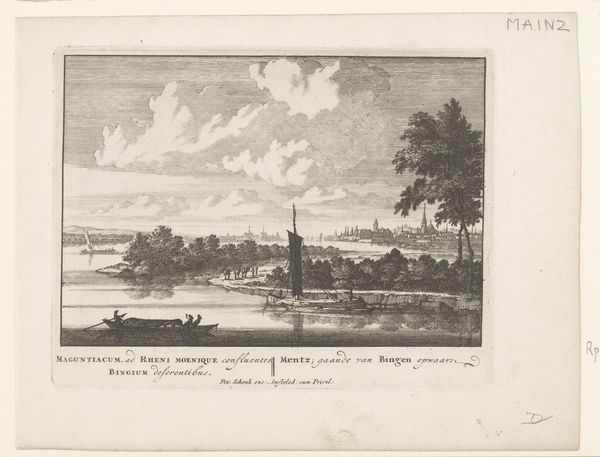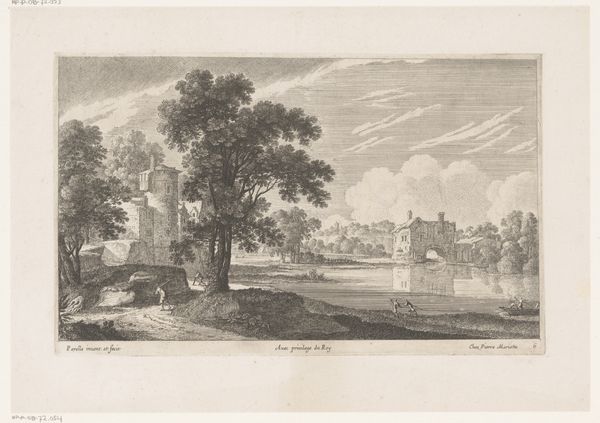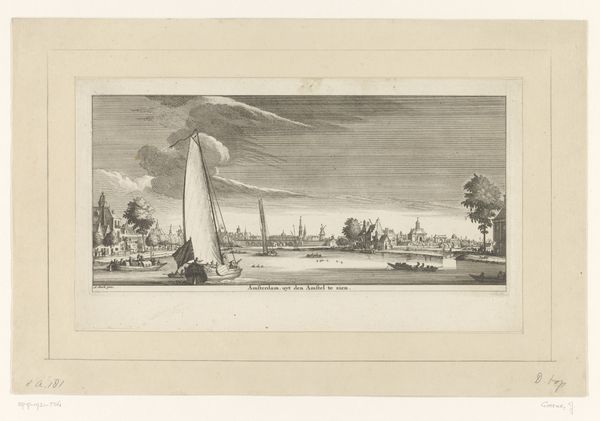
drawing, print, paper, engraving
#
drawing
#
dutch-golden-age
# print
#
landscape
#
paper
#
cityscape
#
engraving
#
realism
Dimensions: height 185 mm, width 443 mm
Copyright: Rijks Museum: Open Domain
Editor: So, here we have Caspar Jacobsz Philips’ "View of Culemborg," made in 1753. It’s a drawing, print and engraving on paper of a Dutch cityscape. The clarity in this detailed panorama almost feels photographic, even though it predates photography. How do you interpret the significance of this city portrait? Curator: Cityscapes like this, especially during the Dutch Golden Age, often operated as both a source of civic pride and a projection of aspirations. Do you notice the ships prominently placed? What do ships signify culturally? Editor: Trade, definitely. Connection to the wider world. Opportunity. I guess showing a robust harbor implied Culemborg was a place of wealth and commerce? Curator: Exactly! The symbols woven into these city views create a powerful narrative of a community's self-image. But look beyond the economic symbols. How does the artist use nature? The trees? The way the light catches the water? Editor: They’re framing the scene, almost theatrical. The light feels…soft, inviting. It’s a romanticized view, even if realistic. It also seems the calm serenity reflected the values and ideas admired during this era. Curator: Precisely. It is not just documenting space; Philips also evokes ideals, memories, perhaps even longings associated with Culemborg. Does viewing the landscape from a tranquil remove, like the artist, allow us to connect differently to the symbolism found within the piece? Editor: I think it does! I had not considered that aspect before. Thank you for that fascinating point! Curator: It’s amazing how an image can hold so much symbolic weight across time and space, isn’t it?
Comments
No comments
Be the first to comment and join the conversation on the ultimate creative platform.
